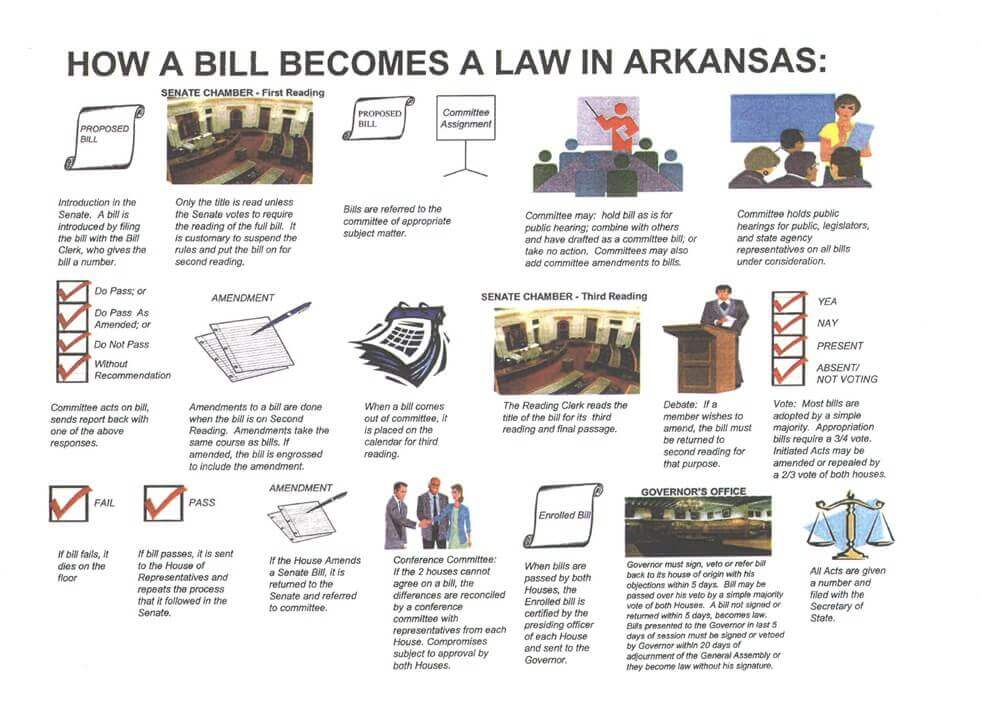How a Bill Becomes a Law

- A citizen contacts his or her state Senator or state Representative with an idea. (Find My Senator)
- The legislator sits down with an attorney who works for the Bureau of Legislative Research. The attorney writes a draft of the bill.
- The senators or representatives bring the draft bill to their respective chamber, where it is assigned a bill number. Senate Bill is often designated as SB and HB stands for House Bill. Senate Bills are numbered beginning with 1, and House bills begin with 1001.
- The bill is read three times in the chamber where it was introduced. Usually, the second reading follows immediately after the first. After the second reading the bill is assigned to the pertinent committee.
- The committee hears a detailed presentation from the legislator who had it written, who is known as the bill’s sponsor. During committee the public and any interested parties can speak on the bill. The committee can add amendments to the bill.
- The committee can vote on the bill in several possible ways: do pass, do pass as amended or do not pass. Also, the committee can simply leave the bill on its agenda without any recommendation. If the bill receives a do not pass recommendation it can still be extracted from committee by the full Senate, but only by an extraordinary majority. This is rare.
- After a bill receives a do pass recommendation it is placed on the Senate calendar, which is a schedule of bills for consideration by the entire body. Before the bill is discussed and voted on by the Senate, it is read for the third in the Senate chamber.
- Many bills need a simple majority to pass. In the 35-member Senate, a simple majority is 18 votes. In the 100-member House it is 51 votes. Appropriations and some tax increase bills need an extraordinary majority of 75 percent to pass. In the Senate that is 27 votes. Bills that would change an initiated act require a two-thirds majority, or 24 votes in the Senate and 67 in the House.
- Senate bills originate in the Senate. After a Senate bill is recommended out of committee and approved by the entire chamber, it is sent to the House, where the process is repeated. If the House adds an amendment, the Senate must vote again on the amended version of the bill in what is known as concurrence in the amendment.
- After a bill is passed by both chambers, the chamber in which it originates sends it to the Governor.
- The Governor may sign a bill into law or veto it. The legislature may vote to overcome the Governor’s veto by a simple majority vote of both chambers. The governor may choose to allow a bill to become law without signing it. When a bill becomes a law it is called an Act and is given a number.
- Many bills become law once 90 days have passed after the legislature has adjourned Sine Die, which is the official last day of the session. Some bills have an emergency clause and become law immediately when the Governor signs them. Some bills specify within the bill when they take effect. Most appropriations take effect on the first day of the upcoming fiscal year.
